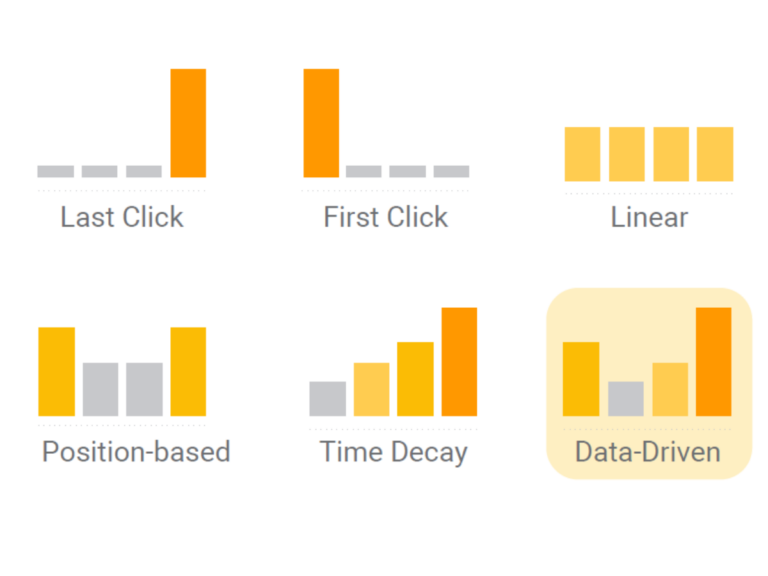Keyword cannibalization is a common SEO mistake where multiple pages on a site target the same or similar keywords. This unintended competition confuses search engines and lowers rankings and organic traffic for all affected pages. Fixing keyword cannibalization is key to optimizing your site and getting more visibility in search results.
The good news? You don’t need paid tools to analyze and fix this issue. We’ll show you how to find and resolve keyword cannibalization with free methods, whether you have access to Google Search Console (GSC) or not.
By understanding the causes, consequences, and solutions you can improve your site’s search engine rankings and overall SEO. Let’s get started on finding and fixing keyword cannibalization without using paid tools.
Understanding Keyword Cannibalization
Common scenarios of keyword cannibalization include:
- Multiple blog posts on the same topic
- Similar product categories with overlapping keyword focus
- Old and updated versions of the same page
For example, a digital marketing agency has separate blog posts on “Content Strategy”, “Content Marketing” and “Content Analysis”. While these topics are related they are too similar to have separate pages and might be causing keyword cannibalization.
It’s important to differentiate between keyword cannibalization and legitimate keyword targeting. While it’s normal for multiple pages to have some keywords in common, the key difference is in the search intent. If different pages are serving different user needs and search queries then it’s not cannibalization.
How to Identify Keyword Cannibalization with Google Search Console (GSC)
Using GSC makes it easier to find and fix keyword cannibalization. Here’s a step-by-step guide to get you started.
Step 1: Log in to your Google Search Console account. If you don’t have one, create one and verify your website. Once in, you’ll see your dashboard.
Step 2: Go to the property (website) you want to analyze. This will ensure you’re looking at the right data for your site.
Step 3: Go to the Performance report. This section shows which keywords are sending traffic to your site. Use the query filter to filter by specific keywords.
Step 4: Scroll down to find a list of search queries your site is ranking for, to find keywords you want to analyze. Click on a specific keyword to apply the “query” filter to see which pages are ranking for it.
Tip: To apply a custom query filter, click the “New” button, then select “Query.” This allows you to input specific search terms for a more detailed analysis.
Step 5: Scroll down to the “Pages” tab, and look for multiple pages that rank for the same keyword. If multiple pages rank for the same keyword, there might be a cannibalization issue.
How to Identify Keyword Cannibalization Without Google Search Console
Let’s get started on how to fix keyword cannibalization without using Google Search Console. We’ll use Google Search Operators to find and consolidate content.
Using Google Search Operators
To manually find keyword cannibalization, search your site via Google with search operators. For example, use the “site:yourwebsite.com “keyword” in Google to find pages related to your target keyword. Analyze the results to see if multiple pages target the same search intent, you have a cannibalization issue.

Tip: While Google’s “site:” operator is a useful tool, it might not always uncover all relevant pages. Consider supplementing your search by utilizing your website’s content management system (CMS) for a more comprehensive analysis.
Using Google Sheets and Search Analytics for Sheets
For a more in-depth analysis, leverage the power of Google Sheets and the Search Analytics for Sheets add-on:
Step 1. Install the Search Analytics for Sheets Add-on:
- Open a Google Sheet.
- Go to Extensions > Add-ons > Get add-ons
- Search for “Search Analytics for Sheets” and install it.

Step 2. Connect to Google Search Console:
- Open the Search Analytics for Sheets sidebar in your Google Sheet.
- Select the verified Google Search Console property you want to analyze.
- Choose the desired date range, search type (web), and group by (query, page).
- Click “Request data.”

3. Analyze the Data:
- Wait for the data to populate in the sheet.
- Create pivot table with query as rows and page as values. This will show all the pages ranking for each keyword.
- Identify keywords with multiple pages ranking in the top positions.
- Analyze the average position and CTR of each page to determine the extent of cannibalization.

4. Make Insights:
- Look for keywords associated with multiple pages, indicating potential cannibalization.
- Evaluate the content quality and relevance of each page.
- Determine the best course of action to address the cannibalization issue (e.g., consolidation, redirection, content optimization).
By combining these methods, you can effectively identify keyword cannibalization issues on your website without relying on paid tools.
Remember that just because two pages are registering impressions for the same term, they’re not necessarily conflicting. It’s only a problem if the content and search intent overlap is too much.
For example, if you have one page on best free seo tools and another on how to fix cannibalization for free, and they both have impressions for “SEO troubleshooting without gsc”, there’s not necessarily a problem.
There’s only a problem if the content has too much overlap or if both pages are targeting the same user intent
In the next section, we’ll explore strategies to address keyword cannibalization issues for better search engine visibility.
How to Fix Keyword Cannibalization
Once you’ve found your pages targeting the same keyword, you need to decide which page should be the main one. Here’s our process to fix this:
- Consolidating Content
Start by identifying the most relevant or high performing page for your keyword. This will be your primary page. Look for the page with the most traffic, best engagement or highest relevance.
Merge useful content from other pages into this main page, make it a comprehensive resource for your keyword. Make sure this primary page is thorough and answer all questions related to the keyword.
- Setting Up Redirects
Next, set up 301 redirects from less relevant pages to your primary page. This will consolidate traffic and authority to one central page. Use htaccess file or a plugin to set up these redirects. Make sure all old pages redirect to your main page smoothly.
- Internal Linking
To optimize internal linking and address keyword cannibalization, focus on these key points:
- Prioritize the Primary Page: Strategically link to the most authoritative page from other relevant pages to boost its ranking potential.
- Utilize Descriptive Anchor Text: Employ precise and descriptive anchor text to accurately convey the linked page’s content.
- Remove Conflicting Internal Links: Eliminate internal links from cannibalized pages that direct users to competing pages.
By implementing these strategies, you can enhance your website’s internal linking structure and improve search engine visibility.
- Content Structure
So to fix keyword cannibalization you should implement a content hub strategy. Create deep content hubs that cover multiple aspects of a topic for multiple search intents. Link related content within those hubs to help navigation and to help the search engines understand your site structure.
- Search Intent
Understanding and catering to search intent is key to creating good content. Analyze the purpose of each search query and write for that. Write for the user and fulfill their search intent and you’ll improve user experience and search rankings.
By doing this you can fix keyword cannibalization, improve search rankings and user experience of your site. Next up we’ll look at monitoring and prevention to keep your keyword performance optimal.
Determining What Constitutes Cannibalization
Automated tools aren’t always accurate in identifying true keyword cannibalization. It requires a nuanced understanding and consideration of many factors:
- Context matters: For example, If you run a business that offers specialized services in a particular field, it’s natural for many pages on your site to rank for related terms. This doesn’t necessarily mean cannibalization is occurring.
- Beyond simple examples: While it’s easy to suggest targeting different specific phrases on separate pages, reality is often more complex, especially for sites with hundreds of content pages. What if you have numerous articles about various aspects of a single topic within your field of expertise?
- Search intent and user experience: A better approach is to consider the user’s search intent and overall experience. Ask yourself:
- What is the user trying to achieve?
- Would merging two related pages provide a better user experience?
- Could changing the content focus make the pages more unique and valuable?
- Content depth and breadth: Sometimes what looks like cannibalization is actually a content strategy. Multiple pages on related topics can provide depth and breadth of content for different stages of the user’s journey.
- Analyze user behavior: Look at bounce rate, time on page, and conversion rates. If multiple pages are performing well for similar keywords then they’re probably serving different user needs.
By considering these factors you can make more informed decisions about whether to consolidate content, redirect pages, or keep separate pages that serve different purposes.
Tips to Monitor and Prevent Keyword Cannibalization
Ongoing monitoring and proactive measures are key to preventing future keyword cannibalization. Here’s how to go about it:
To manage keyword cannibalization you need to monitor and prevent. Regularly check Google Search Console’s performance report to see if cannibalization is emerging. For a more in-depth analysis use SEO tools like SEMrush or Ahrefs. Tracking keyword rankings will also give you early warning signs of potential issues.
To prevent cannibalization do keyword research to avoid overlap and plan your content well. Create content briefs that outline target keywords, search intent and unique selling points. Finally, implement an internal linking structure to guide users and search engines to the right content.
By following these tips, you can monitor your website for keyword cannibalization and prevent it from happening in the future.
Take Your SEO to the Next Level
Well done! You now know how to spot and fix keyword cannibalization. But that’s not the end of the journey – it’s just the beginning of a more strategic approach to your website’s SEO.
What’s your next move? Consider these action steps:
- Content audit: Use the techniques above to audit your existing content for cannibalization issues.
- Content strategy: Create a plan so each piece of content serves a purpose and targets a specific search intent.
- Content inventory system: Start tracking your content so you can prevent future cannibalization and find opportunities to optimize.
- Educate your team: Share this with your content creators and SEO specialists so everyone is on the same page to prevent keyword cannibalization.
- Monitor and iterate: SEO is an ongoing process. Check your rankings and adjust as needed.
Remember, it’s not just about fixing existing issues but to create a system that prevents them from happening in the first place. By doing so you’re not just improving your search rankings but creating a better experience for your users.
Want help unlocking your website’s potential? Let’s chat – no pressure, no sales talk. Just good advice to help you with your content and organic growth initiatives.





no replies